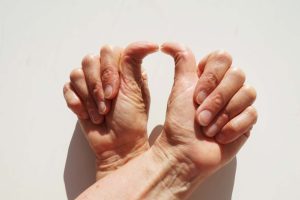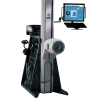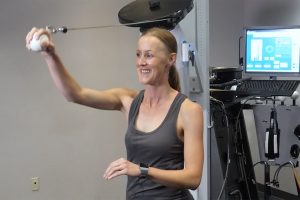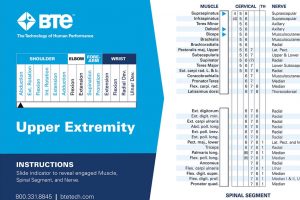
Ehlers Danlos Syndrome: Treatment and Management
Treatment GuidelinesEhlers-Danlos Syndrome (EDS) is a rare disease that primarily affects connective tissue. Let's review the research, best practices, and multidisciplinary approaches to treating this condition.
Ehlers-Danlos Syndrome (EDS) is a rare disease that primarily affects connective tissue. It generally causes overly flexible joints, stretchy skin, and susceptibility to bruising. It is a result of a gene mutation that can either be inherited or occur without a family history.
There are 13 subtypes, with Classical and Hypermobile Type as the most common. EDS diagnosis includes consideration of family history, a physical exam, imaging, and genetic testing. Although there is limited research regarding treatments, let’s look at what we currently know.
Treatments & Management
Ehlers-Danlos patients are best managed by a multidisciplinary approach by professionals that address the physical, social, and mental effects of this disease on their wellbeing 1.
As with many other diagnoses, EDS should not prevent most people from doing their favorite activities. People living with EDS can manage their condition with a wellness lifestyle that includes exercise, adequate sleep, a nutritious diet, and lifestyle modifications. We will explore each of these in greater detail.
Exercise
Exercise is important for maintaining a healthy lifestyle regardless of where a client is on the wellness continuum. Selecting exercises carefully is needed for clients living with Ehlers-Danlos. The connective tissue that holds joints together is looser allowing the joints to move far past the normal range of motion. As a result, joint dislocations are common.
Although there is a risk of injury when exercising, there are also health risks associated with a sedentary lifestyle. Clients should focus on what they can do for physical activity.
The American Physical Therapy Association provides treatment guidance regarding exercise for elderly patients via the Choosing Wisely campaign tenets. One tenet states:
“Don’t prescribe under-dosed strength training programs for older adults. Instead, match the frequency, intensity and duration of exercise to the individual’s abilities and goals2.”
Regardless of the discipline, provide your clients with a home exercise program that they can safely complete. Appropriate recommendations for clients with Ehlers-Danlos include:
- Core strengthening
- Isometric exercises
- Gentle range of motion exercises
- Low- or no-impact cardio such as swimming, biking, and walking
Pain Management
People living with EDS often experience chronic pain in multiple areas of the body. Even if your clients can successfully engage in daily activities using non-medicinal methods for pain control, they can have pain that needs to be managed with medication.
Although there is limited research, some case reports suggests positive outcomes for clients that receive therapeutic intervention for pain. A case report published in 2017 concluded that the patient appeared to experience clinical benefits from a multimodal low-force chiropractic treatment when combined with other medical care.
However, it also stated that the relationship between multimodal low-force chiropractic care and its effect on patients with chronic pain and Hypermobile Type EDS needs further study 3. The Muldowney Exercise Protocol was effective in reducing pain in a physical therapy client after a year in a case report4.
Currently, there aren’t any existing guidelines for chronic pain management associated with EDS5. However, the American Chiropractic Association’s Choosing Wisely campaign provides guidelines for addressing pain. These tenets can be applied to the treatment of clients with EDS. They state:
“Do not provide long-term pain management without a psychosocial screening or assessment. The relationship between chronic pain and depression and anxiety is well established2.
Do not prescribe lumbar supports or braces for the long-term treatment or prevention of low-back pain2.
Avoid protracted use of passive or palliative physical therapeutic modalities for low-back pain disorders unless they support the goal(s) of an active treatment plan5.”
Sleep and Nutrition
According to the National Sleep Foundation, the average adult requires seven to nine hours of sleep per night. However, each person is different and can require more or less than the range. Regardless of the optimal amount of sleep your client needs, items such as body pillows can help to support joints while sleeping.
A well-balanced diet provides the body with the fuel it needs to live. Clients with EDS can be susceptible to bruising, which Vitamin C supplements may help. The use of mild soaps and sunscreen can also aid with skin protection.
Lifestyle and Environmental Modifications
Clients with Ehlers-Danlos can still engage in meaningful and functional activities with the right lifestyle and environmental modifications. Occupational Therapists are well equipped to assess a client’s ability to engage in their daily activities. Assessing the client’s home or work environment will identify where modifications can make life easier. A few modification recommendations include:
- Completing tasks that require more effort earlier in the day and include rest breaks during tasks.
- Dividing a heavy load into smaller, lighter loads.
- Placing frequently used and heavy items where they can be retrieved from waist level.
- Using an ergonomic set up in their home or work office.
Adaptive equipment that protects joints can also help manage life with EDS. Examples include adaptive pens, and large-handled eating utensils and grooming items.
Joint Supports
People with Hypermobile Type Ehlers-Danlos can benefit from joint supports like kinesiotaping, splints, and orthotics. Some practitioners can create custom splints or direct clients towards recommended joint-protecting orthotics and / or compression supports.
Last year, a study examined the efficacy of compression supports for people with Hypermobile Type Ehlers-Danlos Syndrome. Researchers used a compressive short sleeved jacket and studied how it affected shoulder stability and rotator muscles. They concluded that the jacket was able to “clearly improve shoulder stability and help to promote muscle power in shoulder external rotators during high-speed movements” in people with hypermobile EDS6.
The need for lifestyle modifications, professional interventions, and physical support may change as your client ages. However, the effects of this rare disease can be treated and managed to allow your clients to live satisfying and productive lives.
Tasha Holmes, MOT, OTR/L, BCP
Tasha Perkins Holmes, MOT, OTR/L, BCP is an Occupational Therapist, telehealth expert and freelance healthcare writer. She has created continuing education courses for allied health professionals as well as instructed future healthcare professionals. Writing is a means for her to share her knowledge about healthcare topics that are important to healthcare providers and consumers. Writing also provides a way for her to advocate for equitable access to healthcare and to increase the healthcare literacy of the public. Feel free to reach out on LinkedIn and Upwork.
References:
- Zhou Z, Rewari A, Shanthanna H. Management of chronic pain in Ehlers-Danlos syndrome: Two case reports and a review of literature. Medicine (Baltimore). 2018 Nov;97(45):e13115. doi: 10.1097/MD.0000000000013115. PMID: 30407326; PMCID: PMC6250522. https://pubmed.ncbi.nlm.nih.gov/30407326/
- Foundation, A. B. I. M. (2021, July 6). American Physical Therapy Association: Choosing wisely. Choosing Wisely | Promoting conversations between providers and patients. https://www.choosingwisely.org/societies/american-physical-therapy-association/
- Strunk RG. Multimodal Chiropractic Care for Pain and Disability in a Patient Diagnosed With Ehlers-Danlos Syndrome-Hypermobility Type: A Case Report. J Chiropr Med. 2017 Jun;16(2):147-155. doi: 10.1016/j.jcm.2016.12.002. Epub 2017 Jan 12. PMID: 28559755; PMCID: PMC5440637.https://www.ncbi.nlm.nih.gov/pmc/articles/PMC5440637/
- Laferrier JZ, Muldowney K, Muldowney K (2018) A Novel Exercise Protocol for Individuals with Ehlers Danlos Syndrome: A Case Report. J Nov Physiother 8: 382. DOI: 4172/2165-7025.1000382
- Foundation, A. B. I. M. (2021, August 11). American Chiropractic Association: Choosing wisely. Choosing Wisely | Promoting conversations between providers and patients. https://www.choosingwisely.org/societies/american-chiropractic-association/
- Chaléat-Valayer E, Denis A, Zelmar A, Pujol A, Bernadou A, Bard-Pondarré R, Touzet S. VETCOSED study: efficacy of compressive garments for patients with hypermobile Ehlers-Danlos syndrome on shoulder stability and muscles strength. Disabil Rehabil. 2022 Jun;44(13):3165-3172. doi: 10.1080/09638288.2020.1860142. Epub 2020 Dec 22. PMID: 33353449. https://pubmed.ncbi.nlm.nih.gov/33353449/





